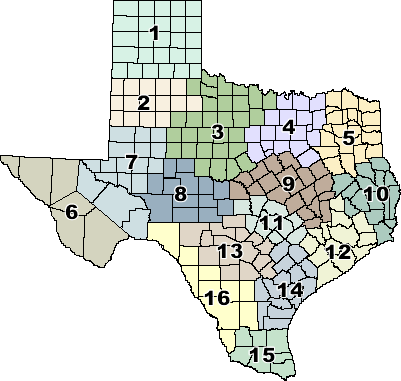Air Toxics
Air toxics, also known as hazardous air pollutants, are pollutants that are known or suspected to cause cancer or other serious health effects. Benzene, arsenic, and mercury are examples of air toxics.
Each state is responsible for developing and implementing plans to help reduce national air-toxics emissions. In Texas, the TCEQ is responsible. Criteria pollutants such as ozone, carbon monoxide, nitrogen dioxide, sulfur dioxide, particulate matter, and lead are regulated under other federal standards.
Data from monitoring air toxics can be used for finding pollution sources, evaluating air-permit applications, and identifying potential health concerns.
The TCEQ toxicology staff uses ambient air monitoring to assess the potential for measured concentrations of air toxics to impair health and cause odors.
The TCEQ measures air toxics concentrations at approximately 102 monitoring sites across Texas, mostly in urban and industrial areas. The 1990 Clean Air Act as subsequently amended identifies 187 toxics; the TCEQ analyzes for 146 of those.
A summary of monitoring sites and the parameters monitored at each site can be obtained by clicking on a region below.

For evaluation of ambient air monitoring results, acute and chronic inhalation air monitoring comparison values (AMCVs) are used to assess the potential for exposure to the measured concentrations to impair human health.
To assess potential welfare effects for monitoring results, the TCEQ toxicology staff uses odor- and vegetation-based AMCVs.
Community Air Toxics Monitoring Network
Canister samples collected throughout the state's urban and industrial areas are collected every 6th day and analyzed using a gas chromatograph-mass spectrometer.
Automated Gas Chromatograph Network
Automated Gas Chromatography samplers (AutoGCs) located throughout the greater Houston, Dallas, El Paso, Corpus Christi, and Odessa areas monitor for VOCs. One 40-minute sample is collected each hour and analyzed automatically on-site.
Carbonyls
Carbonyl samples from the Houston, Dallas-Ft. Worth, and El Paso areas are collected every 6th day and analyzed for carbonyl compounds using high-performance liquid chromatography.
Polyaromatic Hydrocarbons
As part of an U.S. Environmental Protection Agency border grant, the TCEQ monitors polyaromatic hydrocarbon (PAH) concentrations in air at sites along the Texas-Mexico border. Samples are collected every 6th day and analyzed for PAH compounds using a gas chromatograph-mass spectrometer.
Metals
TSP, PM10 and PM2.5 filter samplers monitor for air toxics-metals. Twenty-four-hour samples are collected every sixth or third day.
Benzene Fenceline Monitoring
In December 2015, the U.S. Environmental Protection Agency issued the Refinery MACT (maximum achievable control technology) Rule to further control toxic air emissions from petroleum refineries and provide important information about refinery emissions to the public and neighboring communities. This rule requires refineries to monitor benzene emissions at key emission sources within their facilities and around their fence lines. The TCEQ toxicology staff have evaluated this data to assess the potential for measured benzene concentrations to impact health.
